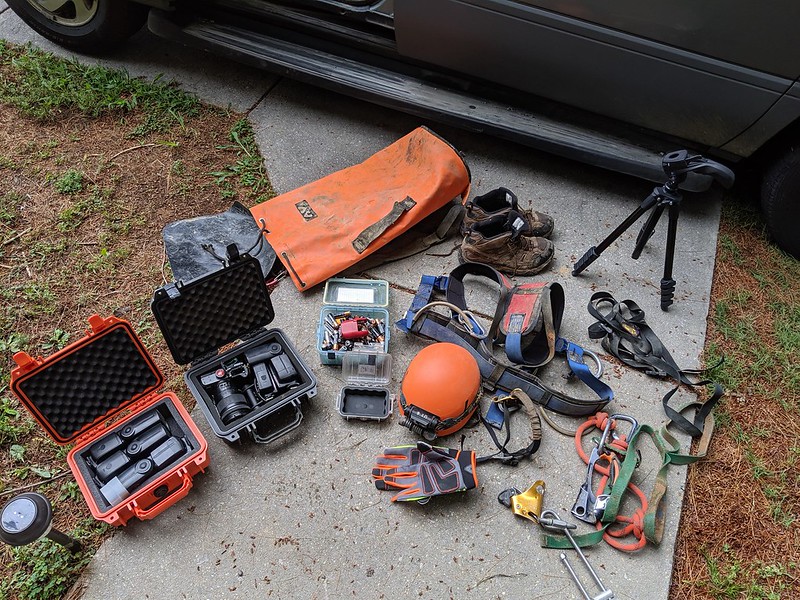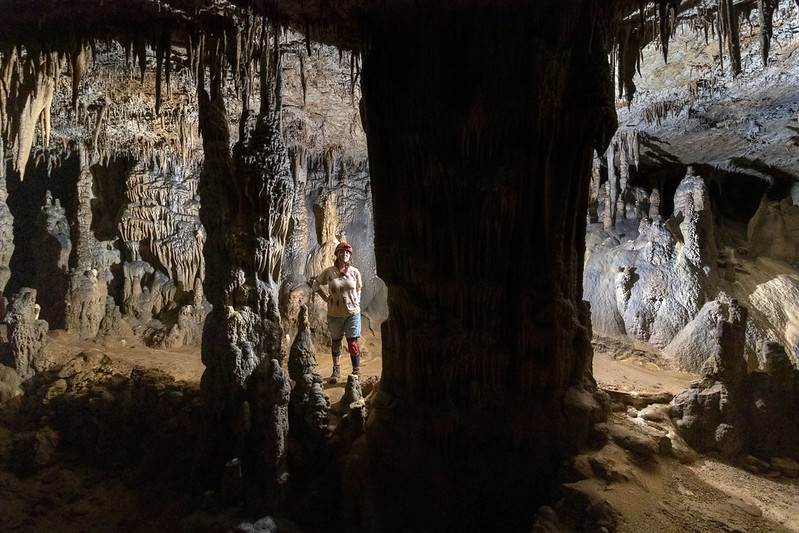Caving Camera Gear

What follows is a list of equipment that I use (and is pictured above) to photograph caves. Caving equipment is not itemized.
Each component of this is very important and serves a purpose. Pelican cases are necessary to protect your equipment from mud, water, and impacts. Taking a camera caving without having some form of protection like a Pelican Case is a sure way to find yourself replacing your camera and lens sooner rather than later. It's a small investment with a big return.
The flashes and transmitter are important because there is no light save for what you bring in a cave. Having multiple off camera flashes allows the photographer to compose the scene as they like. Other lighting options also work, but none work as well for capturing people or dynamic movement. Flashbulbs also will work to do this, and depending on what bulbs one uses can have amazing output. The problem is that they are one use items. The advantage is that you can shoot at f/11 underground.
The tripod is one of those things that I sometimes use and sometimes don't. For a long time I used it, then I stopped for many years, and now I am back to using it. I find the tripod allows me to try numerous lighting options without having to keep reframing the image. This lets me cheat in post and mask multiple images together to get even better lighting. It also allows for the production of large scale panoramic images underground.
Getting soft lights is nice in many cave environments, and for that I have a single Gary Fong diffuser (I would have two more, but there is no room).
No matter what, taking your gear caving will wear it down faster than most any other hobby. Be sure to clear your gear between uses, remove batteries, and store in appropriate conditions to maximize its lifetime.
Some final thoughts for additional stuff to include in your caving gear pack:
1) Lens cloth / washcloth
2) Desiccants
3) Photography scale
4) Ziplock bags with batteries (I label them used and not used)

Comments